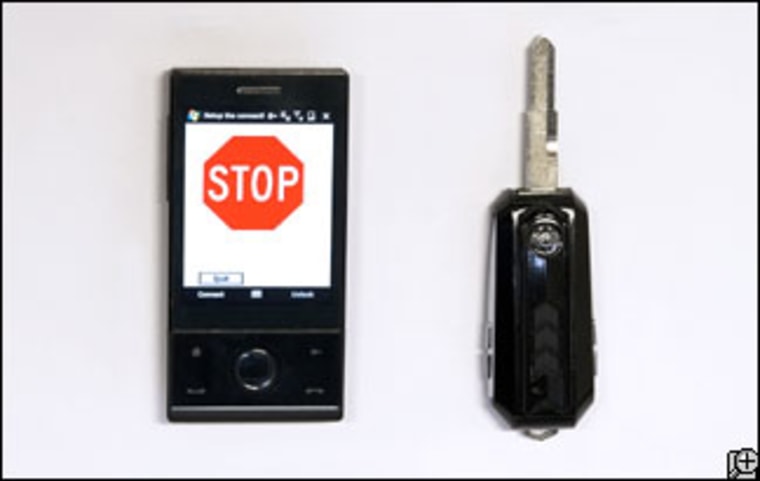Teenagers are notorious for bad driving and animated cell phone conversations, and doing the two simultaneously is an especially deadly mix. Now in an effort to reduce the number one killer of teens, a Utah company is using Bluetooth technology to create a special driving mode that makes it impossible for a driver to talk or text when the car is on.
"The recent stats show that texting on the phone has overtaken drunk driving fatalities on public roads," said Ronn Hartman of Accendo LC, the company working to commercialize the technology. "This is all about saving lives and safer driving."
Every year more than an estimated 330,000 people are injured in cell-phone-related accidents, which kill more than 2,000 people annually. Recent studies have shown that talking or texting on a cell phone can be as dangerously distracting as drunk driving.
In an effort to keep drivers focused on the road, several states have banned drivers from using cell phones while driving, or require hands-free devices, such as those equipped with Bluetooth.
Yet for some people, laws are made to be broken, and even hands-free conversations can quickly become distracting.
To address that problem, the scientists developed a special Bluetooth-equipped key. In the current prototype, pushing a button both releases the key from its shell and activates the embedded Bluetooth technology, which finds the person's cell phone and puts it into driving mode.
When in driving mode, the phone automatically answers all incoming texts and voicemails with, "I am driving now. I will call you later when I arrive at the destination safely." The only calls allowed out are to emergency services.
When the driver turns off the car, they slide the key back to an inactive mode, which returns the phone to normal operation.
Hartman expects to have a commercial version available for purchase within the next several months. Parents would have access to a Web site tracking their teen's driving and talking habits.
That's a fair amount of effort, but soon the service could be an option when buying a new car. Major (but undisclosed) automobile manufacturers have contacted Hartman about including the technology in new vehicles, he said. Insurance companies have also contacted Hartman, raising the possibility of lower insurance rates for families with the technology.
Whenever Key2SafeDriving is implemented, it should reduce the number of car accidents, particularly among teenagers, said David Strayer, a professor at the University of Utah who studies the effects of talking and texting on driving.
According to Strayer, driving while talking on a cell phone makes you four times more likely to have an accident. Using a hands-free headset does nothing to off set that risk. Texting increases the odds of an accident another 50 percent.
Couple those odds with the inexperience of teenage drivers and a deadly mixture is created. Key2SafeDriving, according to Strayer, could help unravel that mess.
"This technology has the potential to really curb teenage driver cell phone use," said Strayer. "I think it's a pretty good idea and that it will result in fewer fatalities on the road."
More on Texting dangers | Cell phones
